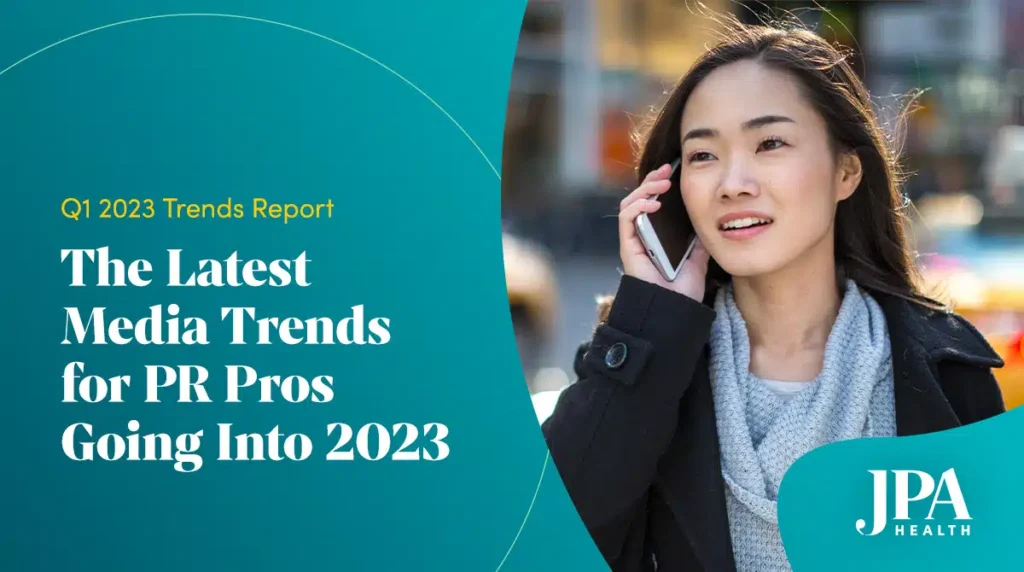
While the health industry continues its transformation toward new technology models and exploring the future of patient care, as PR pros we must also consider what the media trends are that contribute to the rise and fall of these discussions and what they mean for the news cycle. To that end, here are four evolving trends we’ve spotted as we move into 2023 and what they mean for our clients:
Journalists are actually returning to office
During the pandemic, many journalists worked from home, and it was difficult to get in touch with them outside of standard emailing. Office numbers went unanswered and voicemail boxes were too full to leave messages. For the most part, unless someone had a strong relationship with a reporter, many communicators did not have access to personal contact info. However, journalists at several outlets, including the Wall Street Journal, Barron’s, and MarketWatch.com, among others, have been requested to return to their offices if not full time, then in a hybrid capacity.
Some, such as New York Times staff , have been extra vocal in fighting against this policy, though it has not impacted everyone.
What this means: While this will make things a little easier to reach some journalists, timely follow up and being careful about the language we’re using when crafting pitch letters should always remain top of mind.
Layoffs upon layoffs across the board
Similar to the height of 2020, there is a strong decline in the number of reporters in newsrooms as layoffs amass across industries , and those who remain are being assigned to several beats to cover the workload. Vox Media, Dotdash Meredith, Wall Street Journal, Washington Post, Barron’s, AdWeek, CNN, CBS, Gannett/Tenga, and MarketWatch are just some of the newsrooms that have announced massive layoffs in January, along with local outlets across the country.
What this means: Communications professionals will need to manage new relationship development and keep in touch with reporters who are moving around now. We always need to ensure we’re sharing high-value news and viewpoints to breakthrough inbox clutter.
The Gen Z influence
Gen Z is making a play to insert itself into the newsroom dynamic. The issues shaping this generation and capturing their attention primarily revolve around climate change, political polarization, equity among minority groups, and economic uncertainty. They are looking for experts to provide insights and answers to these big-ticket issues and want to be part of finding solutions to share with the public in meaningful ways. They care deeply and are not generally content with traditional “news” items (even if it’s an assigned piece) that have driven industry coverage the last 20+ years. Gen Z consumers turn to social media sites for news significantly more than millennials and above, and they’re looking for it in non-traditional media spaces such as on TikTok and Snapchat.
What this means: We need to bring our clients out-of-the-box thinking and trend ideas on ways to reach Gen Z reporters and audiences. We must deliver informed counsel about the changing landscape of journalism including who is doing it and what exactly they are looking to write about.
Robots in the newsroom? What!?
Some outlets, such as CNET and BuzzFeed , have used and are using AI robots to write articles and content. Since November 2022, CNET has used AI to write 77 articles. However, after some vocal skepticism and some identified factual errors, ultimately, CNET has paused using the AI tool for the time being.
What this means: We don’t know but are going to continue monitoring. AI authors remove the opportunity for crucial human interaction with reporters and may limit our access and idea-sharing.
From a health standpoint, we still do not know the extent that an AI tool would be able to break down complex scientific and medical information, which may leave most of our health trades and outlets with human staff for now.
As always, we must provide thoughtful counsel to our clients about how to operate within a changing media landscape while also being respectful of the journalists with whom we work.

